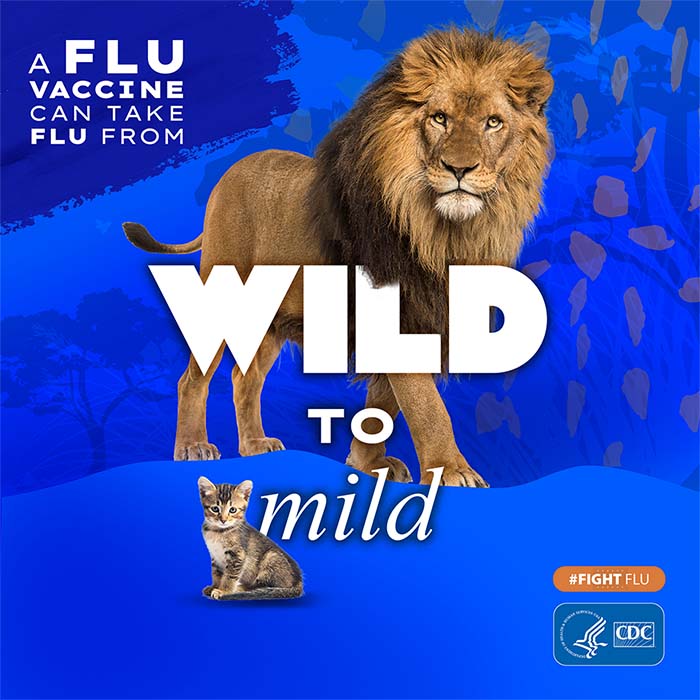CDC Study Shows Flu Vaccination Prevents Significant Flu Illness, Doctor’s Visits and Hospitalizations
June 24, 2013 – Flu vaccination prevented an estimated 13.6 million flu cases, 5.8 million medical visits and nearly 113,000 flu-related hospitalizations in the United States over a 6-year period (2005-2011), according to a study by CDC experts. Since 2010, all people 6 months of age and older in the United States have been recommended to receive annual flu vaccination.
The study, published in PLOS ONE on June 19, 2013, presents a new model to estimate the direct annual impact of flu vaccination in the United States. CDC researchers used flu surveillance data collected during the flu season to project the burden of flu in the absence of vaccination compared to the burden of flu with vaccination. By looking at the difference between the two, the researchers estimated the burden of flu averted by vaccination.
This new model will help CDC experts to quantify the public health benefit of the flu vaccination program in the United States. In the past, CDC has relied on surveys of vaccine coverage and observational studies of vaccine effectiveness that focused on specific populations at specific times to assess and communicate the benefits of vaccination. The new CDC model provides a more standardized and repeatable way to measure and communicate some of the direct public health benefits of flu vaccination.
According to the study, the flu season where the greatest benefit of flu vaccination was measured occurred during the 2010-11 season, when flu vaccination averted more than 18.5% of potential flu cases. This translates into flu vaccines having averted approximately 5 million flu cases, 2.1 million flu-related medical visits and 40,400 flu-related hospitalizations across all age groups in the United States during that season.
The study authors attributed the significant vaccine benefits observed that season to the increase in vaccination coverage among all age groups that occurred following the 2009 pandemic. They believed the increase in vaccination coverage likely resulted from higher public awareness about the flu due to the 2009 H1N1 pandemic.
The season with the lowest number of averted outcomes was 2006-2007, when approximately 1.1 million flu cases were averted. The researchers pointed to milder flu activity as the possible reason for the lower number of averted flu outcomes observed that season, because fewer flu cases can be prevented when the burden of disease is low.
Overall, the researchers concluded that the U.S. flu vaccination program provides substantial health benefits in terms of averted flu cases, medical visits and flu-related hospitalizations. Researchers suggested that increasing flu vaccination coverage has the potential to prevent additional flu-associated disease outcomes, particularly among non-elderly adults – a group that makes up a disproportionately large portion of the population, but for whom vaccine coverage tends to be the lowest.
In addition, the authors said that there is a need for better, more effective flu vaccines for the elderly, who generally do not respond as well to vaccination. Better flu vaccines could improve flu-associated disease outcomes for this age group – especially hospitalization – which occur at much higher rates in the elderly.
The study is available online from the PLOS ONE website.
